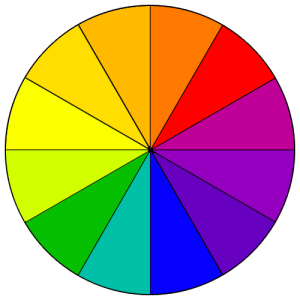A Step By Step Guide On How To Create The Perfect Color Palette For Your Home
Have you ever stopped to dissect an advertisement you loved or analyze a captivating Pinterest-worthy living room? Ever wondered what exactly drew you in? Often, it’s the color scheme that grabs our attention in advertisements or room pictures. It’s a consciously designed element that works its magic on us unconsciously. Brands and advertisers utilize color schemes to convey their messages, while interior designers employ them to evoke specific emotions within a space.
Understanding Color Schemes: The Basics
When I ask my clients about their preferred color schemes, many find themselves at a loss. More often than not, they mention a single color, like red or blue. Yet, a single color can’t constitute a comprehensive room color scheme (imagine an entirely red room – it’s more unsettling than inviting). So, how do designers develop color schemes, and more importantly, how can you create one for your home?
Demystifying The Color Wheel
Enter traditional color schemes, all derived from the color wheel. Designers harness the color wheel and its associated traditional schemes to craft the perfect color palette for your home. What’s this color wheel, you ask? I’m thrilled to share my hard-earned knowledge with you, so here’s a brief overview. Behold, the color wheel:

The color wheel consists of our primary colors: yellow, red, and blue. As you might recall from art class (it’s been a while, hasn’t it?), all colors are mixtures of these three primary hues. Mixing yellow and red yields orange, red and blue create purple, and blue and yellow form green (remember those unintentional green skies in your primary school sun-and-sky drawings? I can relate!). These mixtures are known as secondary colors. Between primary and secondary colors lie shades like yellow-orange, which lean more towards one primary color than the other.
Traditional Color Schemes: Exploring the Possibilities
From this foundation emerge various traditional color schemes:
1. The Monochromatic Color Scheme:

This scheme centers on one color, like blue, with varying shades created by adding varying amounts of grey and white. Monochromatic schemes typically offer a serene ambiance, but they must maintain visual interest to prevent dullness.
2. The Anagolous Color Scheme

Analogous schemes involve three adjacent colors on the wheel, such as blue, blue-green, and green. They create a harmonious flow while keeping things vibrant.
3. The Complimentary Color Scheme

This scheme pairs colors opposite each other on the wheel, such as green and red. While complementary colors can be exciting, they need careful handling to avoid overwhelming the eye. Now, this can go really wrong very easily:

Delving Deeper: More Complex Color Schemes
Of course it gets more complicated than that as there are such things as split-complimentary and double-complimentary and tertriadic color schemes. I‘d like to stop lecturing you right now but if you want to learn more about these, you can go read up on that here.
Practical Steps: Crafting The Perfect Color Scheme For Your Home
Ok, now that we have the theory out of the way let us look at how YOU can create a cool color scheme:
Step 1: Choose Your FAVORITE COLOR
Select your favorite color as a base – let’s say blue (hey, I am doing you a favor and skipping the pink today!).
Step 2: Expand with Variations
Add two to four shades of your chosen color, ranging from lighter to darker. Maintain the primary blue you selected, avoiding deviations like green-blue. Introduce white and black to create visual depth, resulting in a Monochromatic color scheme.

Step 3: Introduce a Complementary Color
For added vibrancy, incorporate a complementary color. With blue, that could be orange (or even coral) to enhance the space’s intrigue. Congratulations, you’ve got a Complementary color scheme!

Step 4: Explore Adjacent Colors
If the addition of orange feels overwhelming, revert to basics by including two colors adjacent to blue on the color wheel – think blue-green and green. This completes an Analogous color scheme.

Embrace the Art of Color Schemes
Creating a color scheme isn’t as daunting as it seems, right? Go ahead, be bold, and experiment. Share your favorite color scheme in the comments below, I´d love to hear! If you’re still uncertain about colors, feel free to reach out to me. Until next time!
